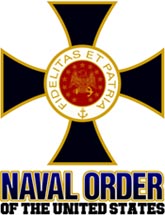Wales/Cymru
Wales/Cymru: ° Aberdyfi ° Aberystwyth ° Bangor (Gwynedd) ° Borth (Ceredigion) ° Cardiff, Pontypridd, Swansea (Glamorgan) ° Holyhead (Anglesey) ° Fishguard, Milford Haven, Pembroke (Pembrokshire) ° Porthmadog (Eifionydd) ° The Welsh Language ° The Mandans and Owain of Wales
Aberdyfi/Aberdovey, Dwynedd
There is recorded mention of a ship anchored in the river as early as 1109, and of a ferry across the Dyfi in 1188, but the first hint of any buildings at Aberdyfi seems to date to 1569, during the reign of Queen Elizabeth I.
 Prince Madoc Ab Owain Gwynedd of Wales |
A survey was carried out of the "Ports, Creeks and Landing Places on the Welsh Coast", and Aberdyfi received the comment
"Devye being a Haven, and having no habitacion, but only three houses, whereunto there is no resort save only in the time of ffyshinge. There is a wonderful greate resorte of ffyshers assembled from all places in this Realm, with Ships, Boottes and Vessels. . ."
 The river's source leading to the Duncan Maxwell |
The Dyfi Valley is widely acknowledged as being the natural border between North and South Wales. (Today, the Dyfi estuary is a UNESCO world biosphere reserve.)
The road system on the Western side of Wales forces the North-South traveller to cross the Dyfi at some point, and one of the main routes into Wales from the English Midlands follows the valley for some distance, at the end of which there are the popular seaside resort villages of Aberdyfi, Ynyslas and Borth.
The valley's history reaches back beyond Owain Glyndwr to Maelgwn Gwynedd, to Taliesin and Arthur, to the Romans, and into a timeless period when people lived alongside the Tylwyth Teg, did magical things, vanquished monsters and even lost an entire land to the sea.
One Spanish ship - The Bear of Amsterdam - put into the Dovey estuary to escape the weather. She anchored just out of range of the local guns, and sailed off before further action could be taken.
A survey was carried out of the "Ports, Creeks and Landing Places on the Welsh Coast", and Aberdyfi received the comment:
"Devye being a Haven, and having no habitacion, but only three houses, whereunto there is no resort save only in the time of ffyshinge.
There is a wonderful greate resorte of flyshers assembled from all places in this Realm, with Ships, Boottes and Vessels . . . "
It had hardly grown by 1796, when it was described as "a poor small place, consisting of a few fishermen's huts" in a book published on "A Pedestrian Tour Thro Wales, by J. B., Jr. W. W.
Elfrida and Braich y Celyn
There's a house just to the east of Aberdyfi called Braich y Celyn, and legend has it that a Welsh chieftain installed his daughter, Elfrida, in this house as part of his plan to fool the sea captain who had been sent to investigate his association with smuggling activities. Unfortunately, Elfrida and the sea captain fell in love, and were in the very act of being married in secret at the house when the father appeared via a secret tunnel and, in his fury, had them walled up alive. The double wall still remains, we are told, and apparently many years ago some bones and a gold ring were found in the wall. It is also said that the secret tunnel actually exists, linking Braich y Celyn with Trefri, an imposing house built down at the water's edge on the Dyfi estuary.
At the end nineteenth century, the village, located on the west coast of mid-Wales, grew rapidly as the industrial revolution took hold and proved to be a boom time for Aberdovey. Ship-building transfomed the tranquil village into a busy, vibrant place with virtually all inhabitants involved with the sea.
Between the years of 1840 to 1880 alone, forty five sailing ships were built at seven yards between Penhelig and Picnic Island, with each ship taking a year to build. Aberdyfi was at its peak as a port. Major exports were slate and oak bark.
Generations of Aberdovey captains and crews sailed in Aberdovey ships, all over the globe. During this time, Aberdovey flourished and became a commercial centre with connections with Manchester, Liverpool, and London.
Ship building was based in seven shipyards in Penhelig where 45 sailing ships were built between 1840 and 1880.
The railway came to Aberdyfi in 1863 built by the Aberystwyth and Welsh Coast Railway. The first train was ferried across the River Dyfi, as the line to Dovey Junction and then Machynlleth was not completed until 1867. Due to public demand, this section had to use a long tunnel behind Aberdyfi, and further major earthworks and tunnels were needed along the bank of the river. This line, which became part of the Cambrian Railways, and later the Great Western Railway, is particularly scenic.
A jetty was built in 1887, with railway lines connecting it with the wharf and the main line. The Aberdyfi & Waterford Steamship Company imported livestock from Ireland which were then taken further by the railway. Coal, limestone and timber were also imported.
The Bells Of AberdoveyAs I am true to thee, sweetheart We'll hear one, two, three, four, five From the bells of Aberdovey. Hear one, two, three, four... five, six Hear one, two, three, four, five and six From the bells of Aberdovey. Glad's a lad his lass to wed When I cross the sea once more Little loves and hopes shall fly |
Clychau AberdyfiFel rwyf fi yn bur i ti Mal un, dau, tri, pedwar, pump, chwech Meddai clychau Aberdyfi. Un, dau, tri, pedwar, pump, chwech, saith Mal un, dau tri, pedwar, pump, chwech Meddai clychau Aberdyfi. Hoff gan fab yw meddu serch Pan ddôf adref dros y môr Paid â'i wneud yn galon wan |
An old song, which appeared as early as 1785 in Charles Didben's play Liberty Hall. |
|
1899. World's Fleet. Boston Daily Globe
Lloyds Register of Shipping gives the entire fleet of the world as 28,180 steamers and sailing vessels, with a total tonnage of 27,673,628, of which 39 perent are British.
| Great Britain | 10,990 vessels, total tonnage of 10,792,714 |
| United States | 3,010 vessels, total tonnage of 2,405,887 |
| Norway | 2,528 vessels, tonnage of 1,604,230 |
| Germany | 1,676 vessels, with a tonnage of 2,453,334, in which are included her particularly large ships. |
| Sweden | 1,408 vessels with a tonnage of 643, 527 |
| Italy | 1,150 vessels |
| France | 1,182 vessels |
For Historical Comparison
Top 10 Maritime Nations Ranked by Value (2017)
| Country | # of Vessels | Gross Tonnage (m) |
Total Value (USDbn) |
|
|---|---|---|---|---|
| 1 | Greece | 4,453 | 206.47 | $88.0 |
| 2 | Japan | 4,317 | 150.26 | $79.8 |
| 3 | China | 4,938 | 159.71 | $71.7 |
| 4 | USA | 2,399 | 55.92 | $46.5 |
| 5 | Singapore | 2,662 | 64.03 | $41.7 |
| 6 | Norway | 1,668 | 39.68 | $41.1 |
| 7 | Germany | 2,923 | 81.17 | $30.3 |
| 8 | UK | 883 | 28.78 | $24.3 |
| 9 | Denmark | 1,040 | 36.17 | $23.4 |
| 10 | South Korea | 1,484 | 49.88 | $20.1 |
| Total | 26,767 | 87.21 | $466.9 | |











 Copyright ~ 1998-2018.
Copyright ~ 1998-2018. 